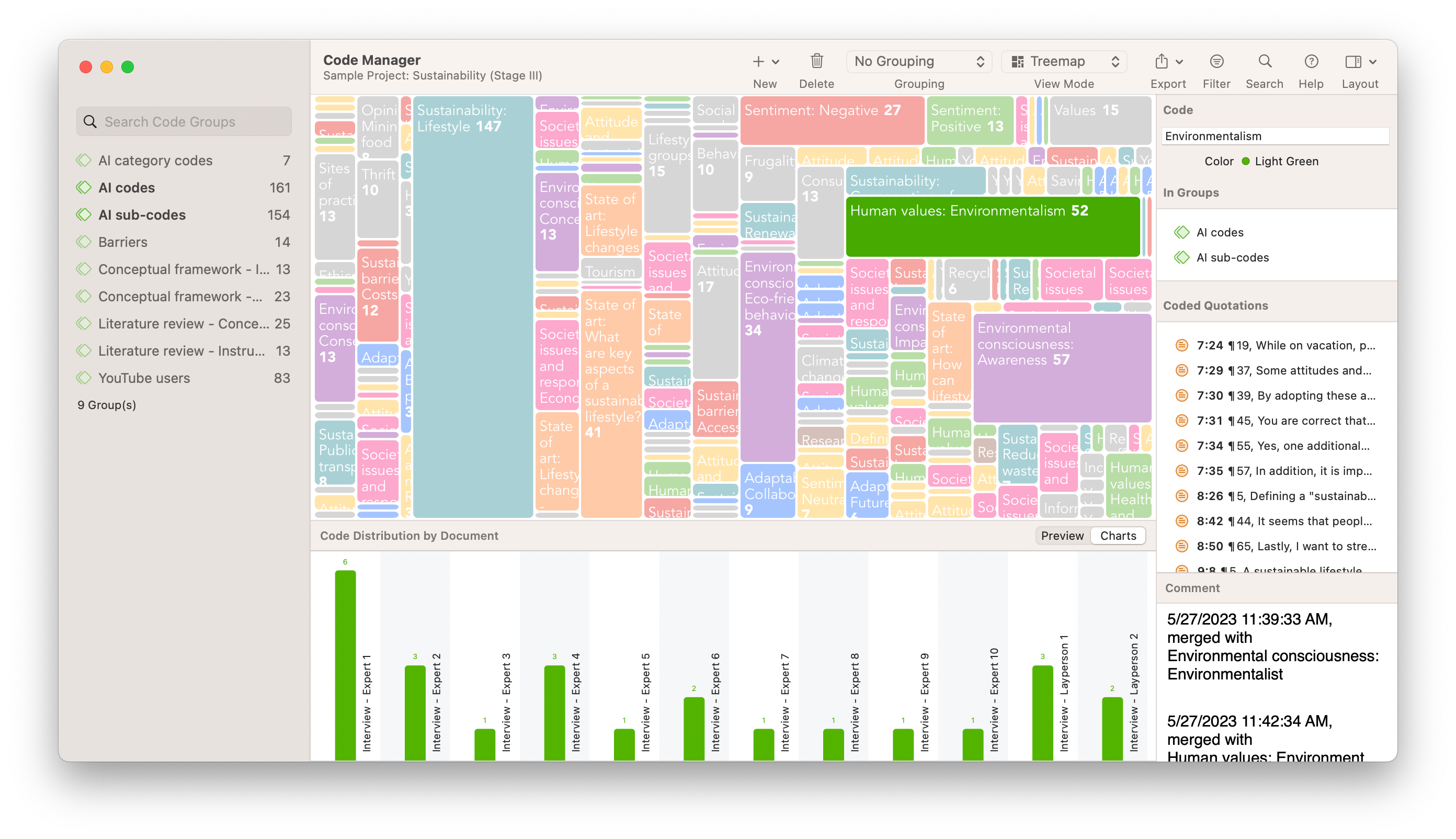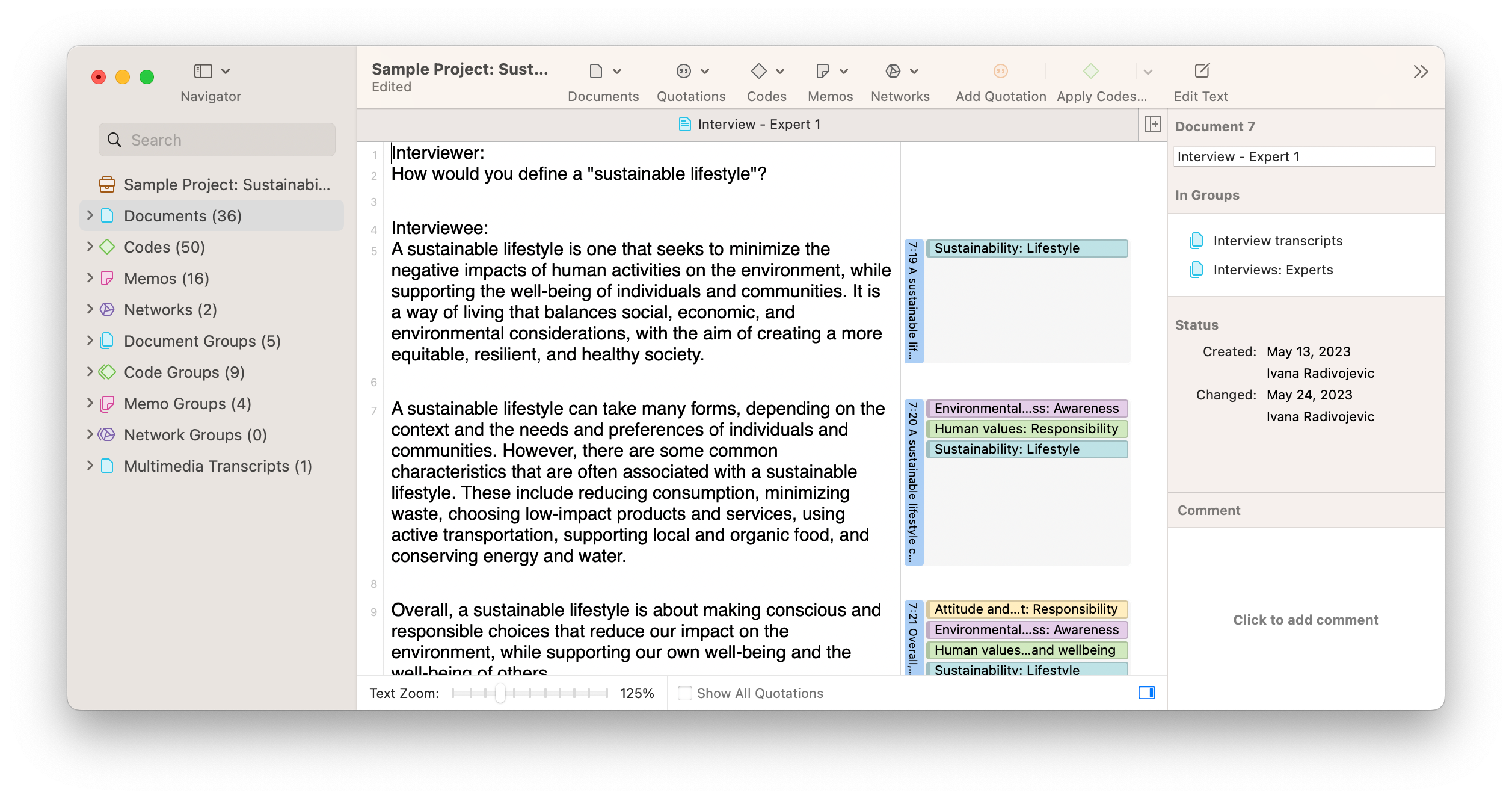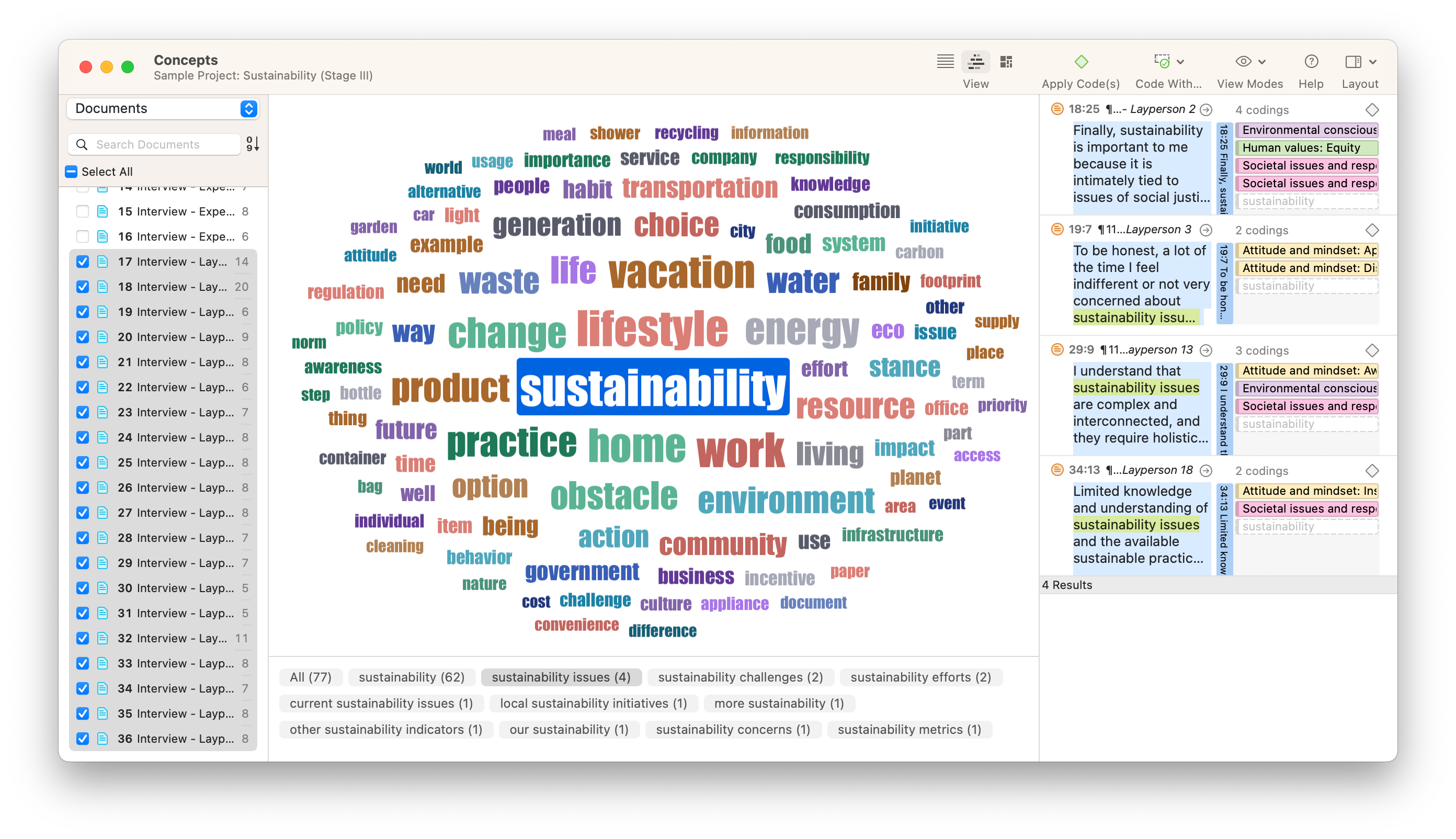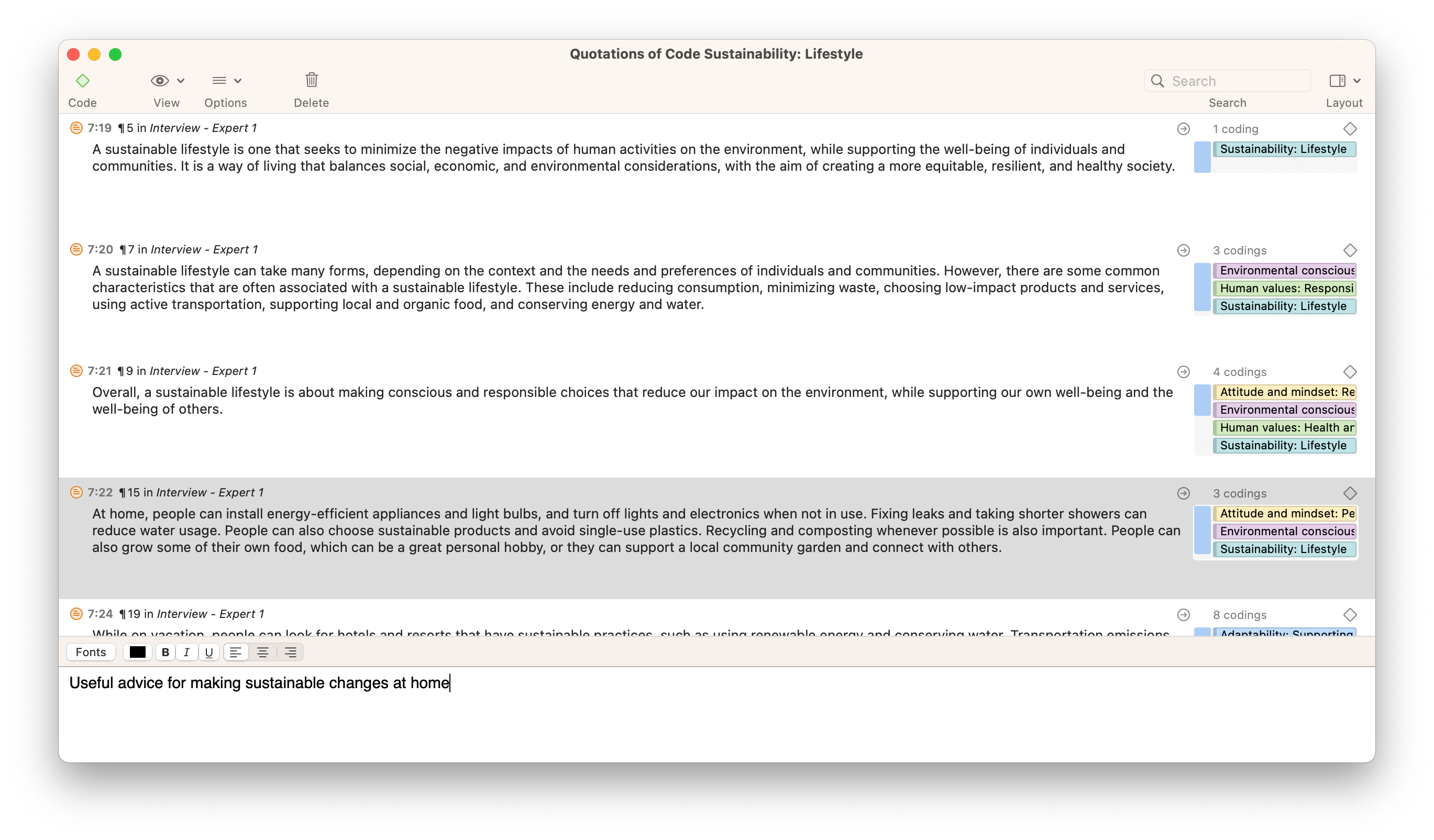Structured Interviews: Guide to Standardized Questions
- Introduction
- Types of interviews in qualitative research
- What are structured interviews good for?
- Structured interview process
Introduction
Qualitative researchers are used to dealing with unstructured data in social settings that are often dynamic and unpredictable. That said, there are research methods that can provide some more control over this unpredictable data while collecting insightful data.
The structured interview is one such method. Researchers can conduct a structured interview when they want to standardize the research process to give all respondents the same questions and analyze differences between answers.
In this article, we'll look at structured interviews, when they are ideal for your research, and how to conduct them.

Types of interviews in qualitative research
Interviews are intentionally crafted sources of data in social science research. There are three types of interviews in research that balance research rigor and rich data collection.
To better understand structured interviews, it's important to contrast them with the other types of interviews that also serve useful purposes in research. As always, the best tool for data collection depends on your research inquiry.
Structured interviews
The structured interview format is the most rigid of the three types of interviews conceptualized in qualitative research. Imagine policy makers want to understand the perceptions of dozens or even hundreds of individuals. In this case, it may make it easier to streamline the interview process by simply asking the same questions of all respondents.
The same structured interview questions are posed to each and every respondent, akin to how hiring managers ask the same questions to all applicants during the hiring process. The intention behind this approach is to ensure that the interview is the same no matter who the respondent is, leaving only the differences in responses to be analyzed.
Moreover, the standardized interview format typically involves respondents being asked the same set of questions in the same order. A uniform sequence of questions ensures for an easy analysis when you can line up answers across respondents.

Unstructured interviews
An unstructured interview is the exact opposite of a structured interview, as unstructured interviews have no predetermined set of questions. Instead of a standardized interview, a researcher may opt for a study that remains open to exploring any issues or topics that a participant brings up in their interview. While this can generate unexpected insights, it can also be time-consuming and may not always yield answers that are directly related to the original research question guiding the study.
However, this doesn't make a study that employs unstructured interviews less rigorous. In fact, unstructured interviews are a great tool for inductive inquiry. One typical use for unstructured interviews is to probe not only for answers but for the salient points of a topic to begin with.
When a researcher uses an unstructured interview, they usually have a topic in mind but not a predetermined set of data points to analyze at the outset. This format allows respondents to speak at length on their perspectives and offer the researcher insights that can later form a theoretical framework for future research that could benefit from a structured interview format.
Moreover, this format provides the researcher with the greatest degree of freedom in determining questions depending on how they interact with their respondents. A respondent's body language, for example, may signal discomfort with a particularly controversial question. The interviewer can thus decide to adjust or reword their questions to create a more comfortable environment for the respondent.
Semi-structured interviews
A semi-structured interview lies in the middle ground between the structured and unstructured interview. This type of interview still relies on predetermined questions as a structured interview does. However, unlike structured interviews, a semi-structured interview also allows for follow-up questions to respondents when their answers warrant further probing. The predetermined questions thus serve as a guide for the interviewer, but the wording and ordering of questions can be adjusted, and additional questions can be asked during the course of the interview.
A researcher may conduct semi-structured interviews when they need flexibility in asking questions but can still benefit from advance preparation of key questions. In this case, much of the advice in this article about structured interviews still applies in terms of ensuring some degree of standardization when conducting research.
What are structured interviews good for?
Consider that more free-flowing interview formats in qualitative research allow for the interviewer to more freely probe a respondent for deeper, more insightful answers on the topic of inquiry. This approach to research is useful when the researcher needs to develop theoretical coherence surrounding a new topic or research context in which it would be difficult to predict beforehand which questions are worth asking.
In this sense, structured interviews make more sense for research inquiries with a well-defined theoretical framework that guides the data collection and data analysis process. With such a framework in mind, researchers can devise questions that are grounded in existing research so that new insights further develop that scholarship.
Advantages of structured interviews
Formal, structured interviews are ideal for keeping interviewers and interview respondents focused on the topic at hand. A conversation might take unanticipated turns without a set goal or predetermined objective in mind; a structured interview helps keep the dialogue from going down any irrelevant tangents and minimize potentially unnecessary, extended monologues.
Another key advantage of structured interviews is that it makes comparisons across participants easier. Since each person was asked the same questions, the data is produced in a consistent format. Researchers can then focus on analyzing answers to a particular question, and there is minimal data organization work that needs to be done to facilitate the analysis.
There are also benefits in terms of the logistics of conducting structured interviews. Interviewers concerned with time constraints will find this format beneficial to their data collection.
Moreover, ensuring that respondents are asked the same questions in the same order limits the need for training interviewers to conduct interviews in a consistent manner. Unstructured and semi-structured interviews rely on the ability to ask follow-up questions in moments when the responses provide opportunities for deeper elaboration.
Those who conduct a structured interview, on the other hand, need only read from an interview guide with a list of questions to pose to respondents. This allows the researcher more freedom to rely on assistants to conduct interviews with minimal training and resources.

Disadvantages of structured interviews
In structured interviews, there is little room for asking probing questions of respondents, particularly if the researcher believes that follow-up questions might adversely influence how the respondent answers subsequent core questions. Restricting the interview to a predetermined set of questions may mitigate this effect, but it may also prevent a sufficiently clear understanding of respondents' perspectives established from the use of follow-up questions.
Forcing the interviewer to ask the same order of questions in an interview can also have a consequential effect on the data collection. Because every respondent is different, the interview questions may resonate with each person in different ways. A skillful interviewer conducting unstructured or semi-structured interviews has the freedom to make choices about what questions to ask in order to gather the most insightful data.
Ultimately, the biggest disadvantage of structured interviews comes from their biggest advantage: using predetermined questions can be a double-edged sword, providing consistency and systematic organization but also limiting the research to the questions that were decided before conducting the interviews. This makes it crucial that researchers have a clear understanding of which questions they want to ask and why. It can also be helpful to conduct pilot tests of the interview, to test out the structured questions with a handful of people and assess if any changes to the questions need to be made.
Why not just do surveys?
You might think that a structured interview is no different from a survey with open-ended questions. After all, the questions are determined ahead of time and won't change over the course of data collection. In many ways, there are many similarities in both methods.
There are, of course, benefits to either approach. Surveys permit data collection from much larger numbers of respondents than may be feasible for an interview study. Structured interviews, however, allow the interviewer some degree of flexibility, particularly when the respondent has trouble understanding the question or needs further prompting to provide a sufficient response.
Moreover, the interpersonal interaction between the interviewer and respondent offers potential for richer data collection because of the degree of rapport established through face-to-face communication. Where written questions may seem static and impersonal, an in-person interview (or at least one conducted in real time) might make the respondent more comfortable in answering questions.
Individual interviews are also more likely to generate detailed responses to questions in comparison to surveys. Interviews are also well suited for research topics that bear some personal significance for participants, providing ample space for them to express themselves.
Structured interview process
When you conduct a structured interview, you are designing a study that is as standardized as possible to mitigate context effects and ensure the ease of data collection and analysis. As with all interviews conducted in qualitative research, there is an intentional process to planning for structured interviews with considerations that researchers should keep in mind.
Research design
As mentioned above, research inquiries with clearly defined theoretical frameworks tend to benefit from structured interviews. Researchers can create a list of questions from such frameworks so that answers speak directly to, affirm, or challenge the existing scholarship surrounding the topic of interest.
A researcher should conduct a literature review to determine the extent of theoretical coherence in the topic they are researching. Are there aspects of a topic or phenomenon that scholars have identified that can serve as key data points around which questions can be crafted? Conversely, is it a topic or phenomenon that lacks sufficient conceptualization?
If your literature review does not allow you to create or use a robust theoretical framework for data collection, consider other types of interviews that allow you to inductively generate that framework in data analysis.
You should also make decisions about the conditions under which you conduct interviews. Some studies go as far as making sure that the interview environment is a uniform context across respondents. Are interviews in a quiet, comfortable environment? What time of day are interviews conducted?
The degree to which you ensure uniform conditions across interviews is up to you. Whatever you decide, however, creating an environment where respondents feel free to volunteer answers will facilitate rich data collection that will make data analysis more meaningful.
Structured interview questions
An interview guide is an essential tool for structured interviews. This guide is little more than a list of required questions to ask, but this list ensures consistency across the interviews in your study.
When you write questions for a structured interview, rely on your literature review to identify salient points around which you can design questions. This approach ensures that you are grounding your data collection in the established research.
When crafting your guide, think about the time constraints and the likely length of answers that your respondents may give. Structured interviews can involve five or 25 questions, but if you are limited to 30-45 minutes per respondent, you will need to consider whether you can ask the required questions and collect sufficient responses within your timeframe.
As a result, it's important to pilot your questions with preliminary respondents or other researchers. A pilot interview allows you to test your interview protocol and make tweaks to your question guide before conducting your study in earnest.

Collecting data from structured interviews
Data collection refers to conducting the interviews, recording what you and your respondents say, and transcribing those recordings for data analysis. While this is a simple enough task, it is important to consider the equipment you use to collect data.
If the verbal utterances of your respondents are your sole concern, then an audio recorder should be sufficient for capturing your respondents' answers. Your choice of equipment can be as simple as a smartphone audio recorder application. Alternatively, you can consider professional equipment to make sure you collect as much audio detail as possible from your interviews.
Communication studies, for example, may be more concerned about the interviewer effect (e.g., studies that ask controversial questions to evoke particular responses) or the context effects (i.e., the effect of the surrounding environment on respondents) in interviews. In such cases, interviewers may capture data with video recordings to analyze body language or facial expressions to certain interview questions. Responses caught on video can be analyzed for any patterns across respondents.
Analyzing structured interviews
Once you have transcribed your interviews, you can analyze your data. One of the more common means for analyzing qualitative data is thematic analysis, which relies on the identification of commonly recurring themes throughout your research. What codes occur the most often? Are there commonalities across responses that are worth pointing out to your research audience?

It's a good idea to code each response by the question they address. The set order of questions in a structured interview study makes it easy to identify the answers given by each respondent. By coding each answer by the question they respond to and the themes apparent in the response, you will be able to analyze what themes and patterns occur in each set of answers.

You can also analyze differences between respondents. In ATLAS.ti, you can place interview transcripts into document groups to organize and divide your data along salient categories such as gender, age group, socioeconomic status, and other identifiers you may find useful. In doing so, you will be able to restrict your data analysis to a specific group of interview respondents to see how their answers differ from other groups.
Presenting interview findings
Disseminating qualitative research is often a matter of summarizing the salient points of your data analysis so that it is easy to understand, insightful, and useful to your research audience. For research collecting data from interviews, two of the more common approaches to presenting findings include visualizations and excerpts.
Visualizations are ideal for representing the salient ideas arising from large sets of otherwise unstructured data. Meaningful illustrations such as frequency charts, word clouds, and Sankey diagrams can prove more persuasive than an extended narrative in a research paper or presentation.
Consider the word cloud in the screenshot of ATLAS.ti below. This word cloud was generated from the transcripts of a set of interviews to illustrate what concepts appear the most often in the selected data. Concepts mentioned more often appear closer to the center of the cloud, showing which keywords appear most frequently in the data. Such a visualization can provide a quick illustration to show to your research audience what topics emerged in the data analysis.

You can also effectively represent each of your themes with an example or two from the responses in your data. Data exemplars are representations that the researcher deems are typical of or significant about the portion of the data under discussion. Often in research that employs interviews or observations, an author will present an exemplar to explain a theme that is significant to theory development or challenges an existing theory.

ATLAS.ti provides tools to restrict your view of the data to codes you find significant to your findings. The Code Manager view makes it easy to look not at the entire data set but the specific segments of text that have been coded with a particular code. In similar fashion, ATLAS.ti's Query Tool is ideal for defining a set of criteria based on the codes in the data to see which data segments are most relevant to your research inquiry.





